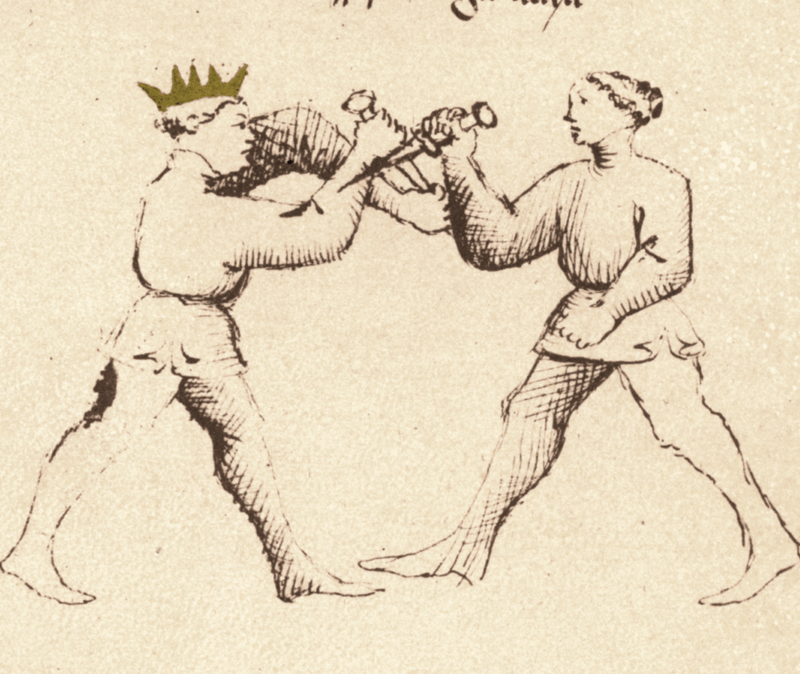The Intimidating Rondel

The rondel dagger is quite different from a modern tactical knife in that its primary function is as an armour-piercing spike. This changes how you address defending yourself from many modern systems. You don’t have sharp slicing edges to worry about, yet it is nearly a foot long meaning you can’t let your opponent get very cozy.
In this video I introduce the rondel dagger, its form and function.
Positions as Waypoints
In my recent online course on the rondel and its defense both in and out of armour we explored two core sets of positions in Armizare that make up the defensive system: The Masters, and the Poste (Italian for “positions”).
The nine remedy masters, originally presented by Maestro Fiore in the 14th century, are a set of beginning points for defensive techniques. Each represents both a type of threat (question or puzzle) and a method for meeting that threat (the remedy). The nine are:
First Master – Same side defense vs high threats

Second Master – Crossed arms vs high threats

Third Master – Crossbody defense vs high threats

Fourth Master – Centreline defense vs high threats (both hands)

Fifth Master – Breaking grips before and during dagger defense

Sixth Master – Both hands vs low threats

Seventh Master – Dagger open grip vs high threats

Eighth Master – Dagger crossed grip vs high threats

Ninth Master – Dagger open grip vs low threats

(Note that in Fiore’s original rendering of the system he presented the Sixth master as his Ninth.)
Each master is followed by techniques that follow from that starting position called the scholars. Each scholar technique represents a development of the initial remedy based on angle, pressure, and distance in relation to the opponent.
This lesson clip from the DuelloTV Scholars Live series demonstrates the first scholar from the first master:
The triangle disarm executed in this technique is an optimal outcome but what if the opponent is closer to you, or pulls their arm in more tightly in response to your defense? Well, there’s a scholar for that!
Poste as Building Blocks
Every remedy is made up of a series of building block positions called the poste (pronounced post-ay). There are four core unarmed poste in Duello Armizare:
Posta Longa – Long Position

Dente di Cinghiaro – Boars Tooth

Posta Frontale – Frontal Position

Porta di Ferro – Iron Gate

In every lesson we use these positions to break down a complex series of movements into clear units. In the first master disarm the dagger attack is initially parried in posta longa, then brought close into porta di ferro, stripped from the grip through dente di cinghiaro, and finally a counter attack executed in posta frontale.
Beyond being positions in space, the poste also represent important physical concepts like extension (posta longa), using short levers against long ones (dente di cinghiaro), defending and attacking on your centre (posta frontale), and dropping your body weight (porta di ferro).
By focusing on positions rather than simply pushing and pulling on our opponent we can employ more powerful levers and move more fully through our opponent’s space. A powerful strike is more easily countered when we form posta longa through the opponent’s attacking arm rather than simply throwing our own fists up into the path of the attack.
More to Study
If you want to dive more deeply into the unarmed system of Duello Armizare there are two great video course series to explore:
Scholar members can access our full dagger defense series that goes through all nine masters and every remedy related to them.
Scholars Live members can access that PLUS the Dagger in Armour and Out series that features seven one-hour on-demand classes with both solo and partner exercises as well as training plans. And as a subscriber you can also participate online in new live sessions every week.




